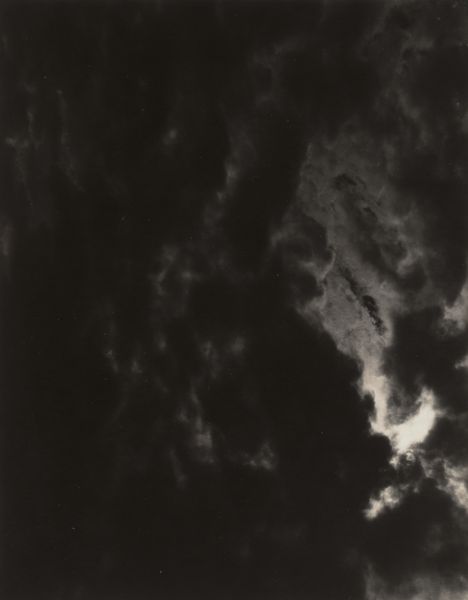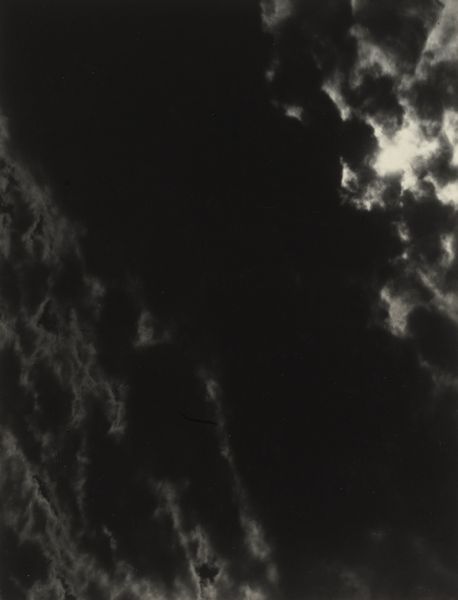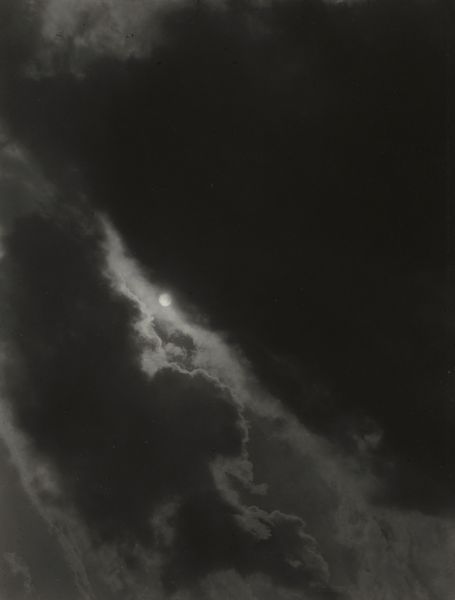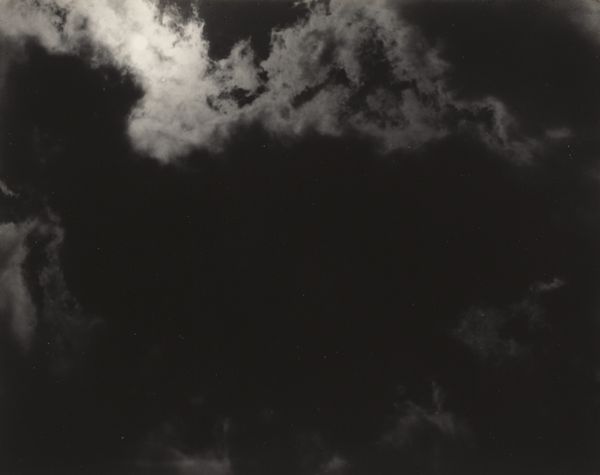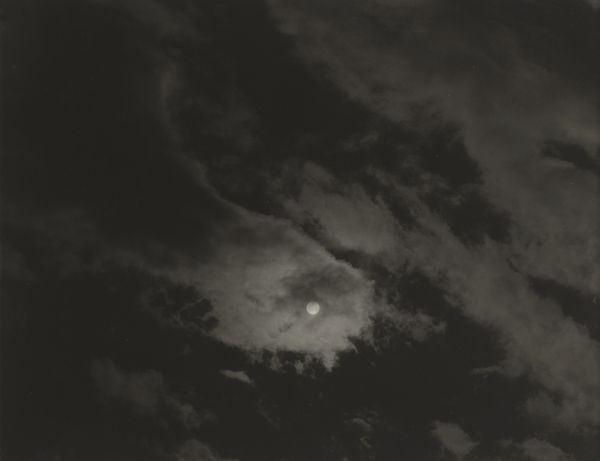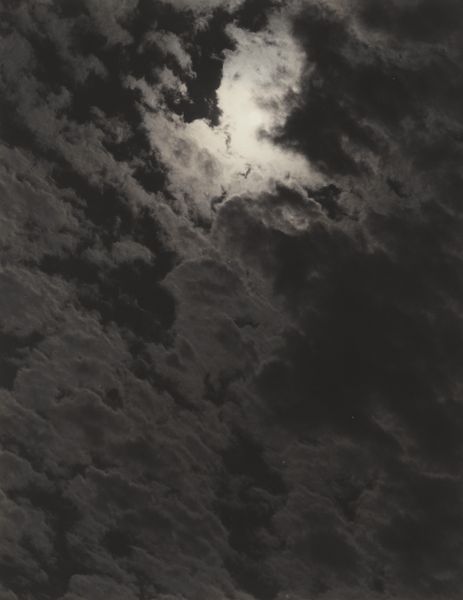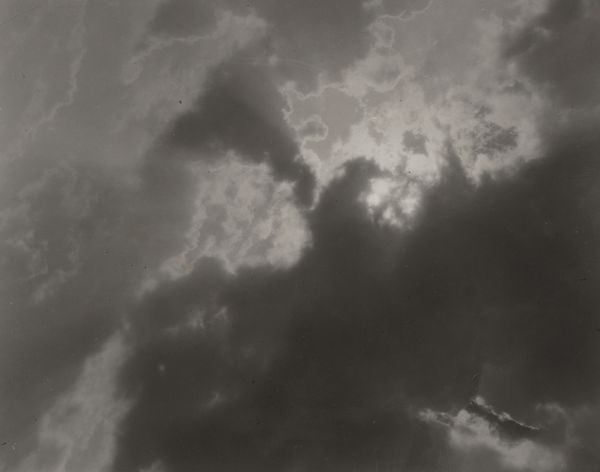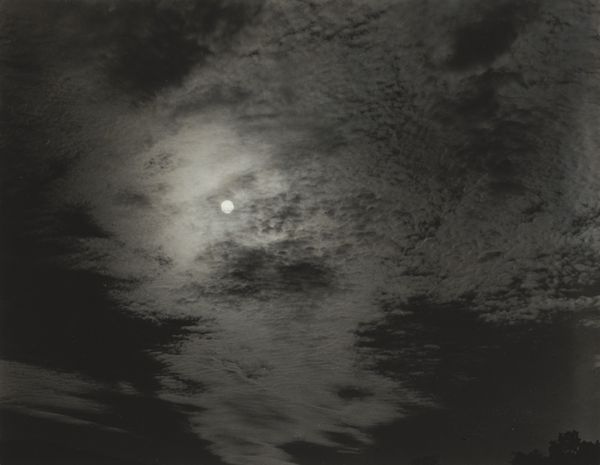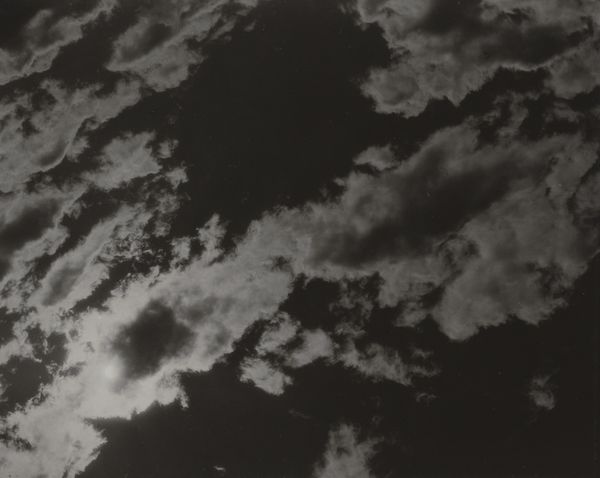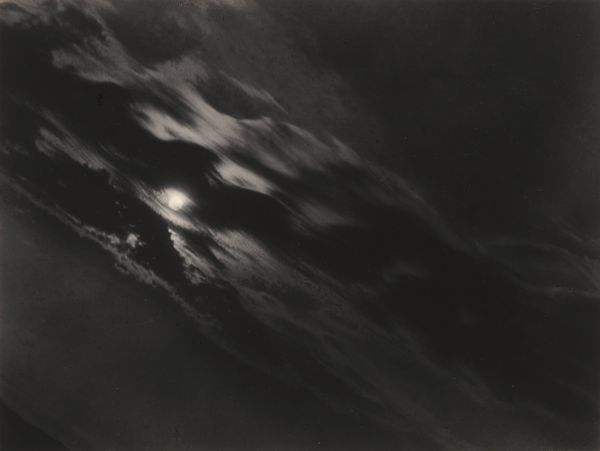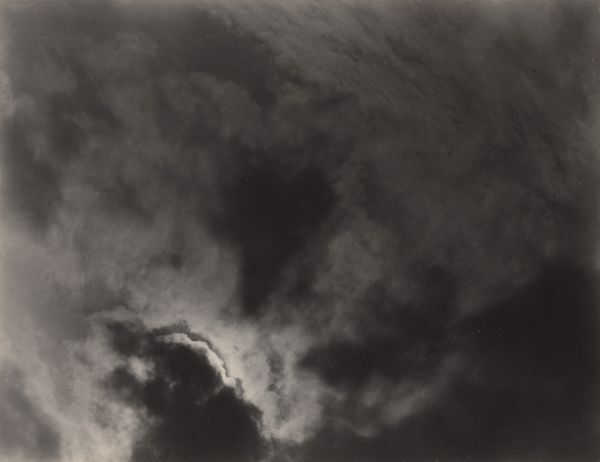
photography, gelatin-silver-print
#
still-life-photography
#
pictorialism
#
landscape
#
photography
#
environmental-art
#
gelatin-silver-print
#
monochrome photography
#
abstraction
#
modernism
#
monochrome
Dimensions: sheet (trimmed to image): 9.2 x 11.8 cm (3 5/8 x 4 5/8 in.) mount: 34.2 x 27.2 cm (13 7/16 x 10 11/16 in.)
Copyright: National Gallery of Art: CC0 1.0
Editor: Here we have Alfred Stieglitz’s "Equivalents," taken in 1927; a gelatin silver print, primarily of clouds. The composition is striking—a dramatic contrast between light and shadow. It evokes a sense of both serenity and looming darkness. What do you see in this piece? Curator: This work goes far beyond just capturing clouds. Stieglitz, deeply influenced by modernism, was grappling with the very definition of art and photography’s place within it. Consider the social climate of the time. The 1920s saw rapid industrialization and urbanization, alongside significant social upheaval. "Equivalents" served as a radical departure from traditional representational photography. Do you think these photographs can be seen as a search for something authentic amidst all that change? Editor: That's an interesting point. So, instead of a literal representation of clouds, it's more about expressing inner emotional states? Curator: Precisely! Stieglitz aimed to find visual "equivalents" for his feelings. This resonates strongly with feminist theories questioning patriarchal structures, particularly within artistic representation. How does it make you feel to see photography being used this way? Does that shift the conversation about who art is for? Editor: I can see that it removes the pressure of art always having to depict something, someone in particular and it’s quite freeing in that sense. The conversation can move to art being an expression, more accessible and open. Curator: And that's exactly where the power lies. Stieglitz challenged established norms and paved the way for future generations to use photography as a tool for self-expression and social commentary. The cloudscapes, becoming reflections, invite us to find our own 'equivalents', a sense of liberation that speaks to me on many levels. Editor: I've certainly gained a new perspective on this photograph. I'll never look at clouds the same way!
Comments
No comments
Be the first to comment and join the conversation on the ultimate creative platform.


